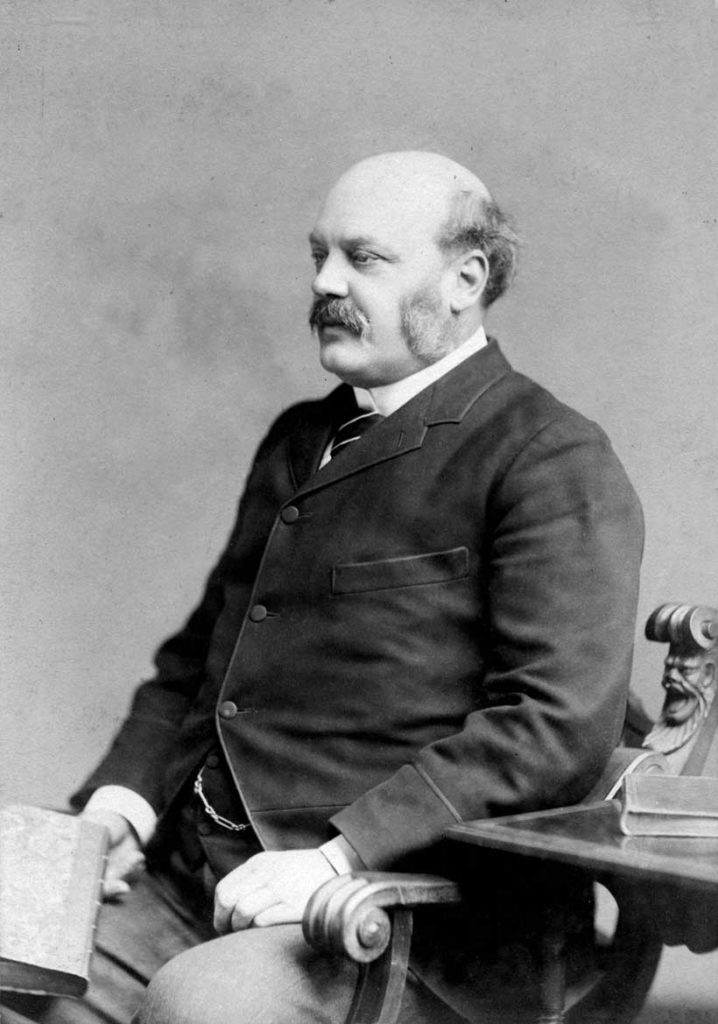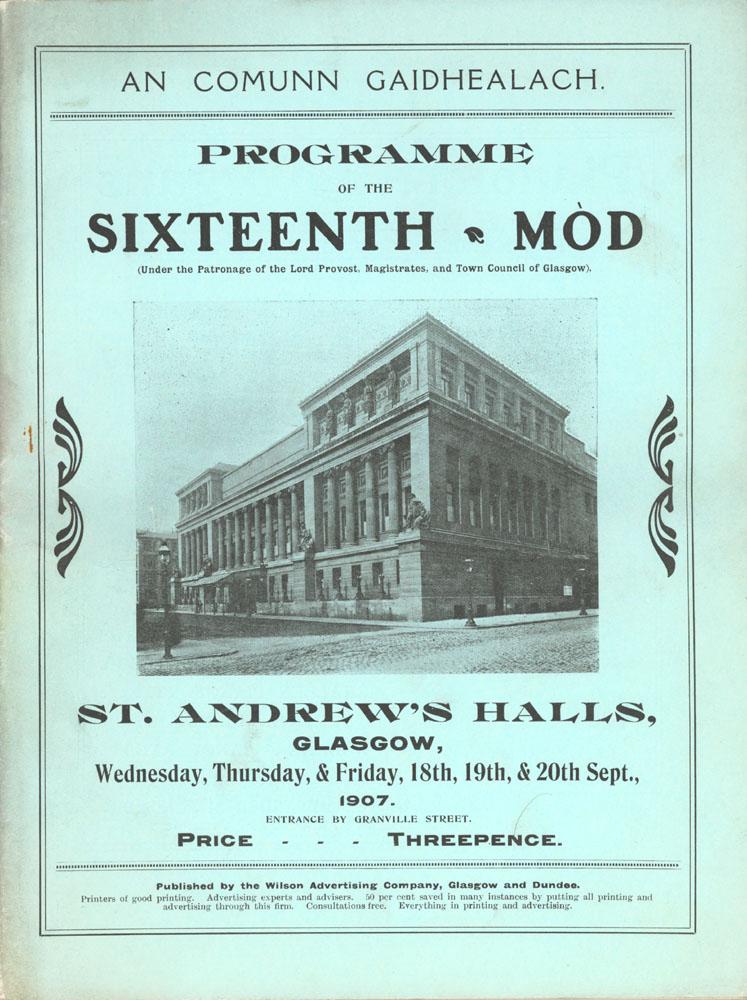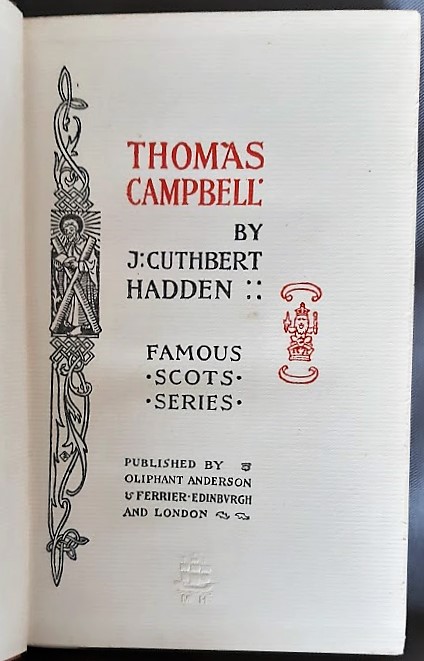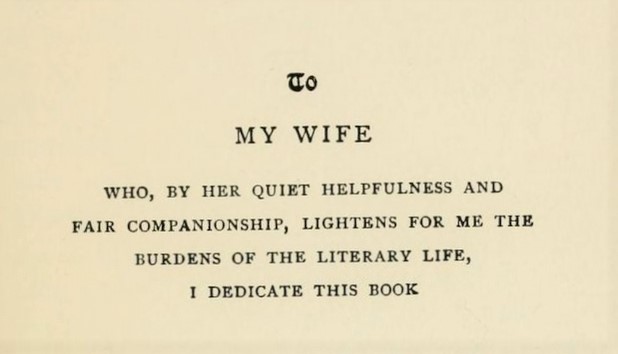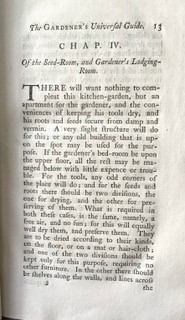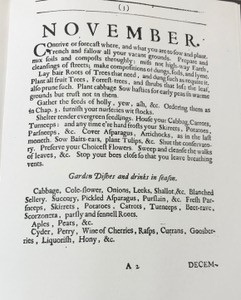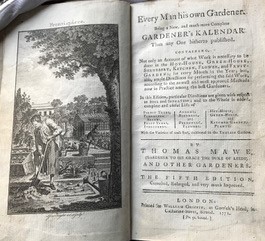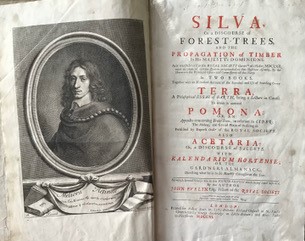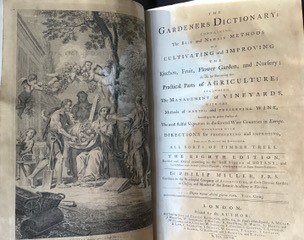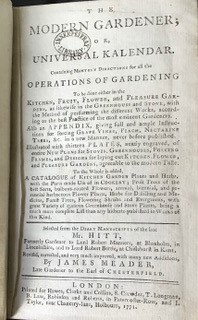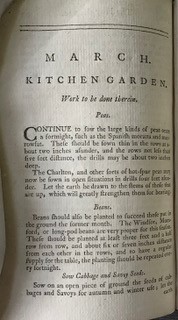“In short, in regard to music, our great writers have been just like other people—some have been passionately fond of music, some have liked it in a mild kind of way, and some have been absolutely indifferent to it.”[1]
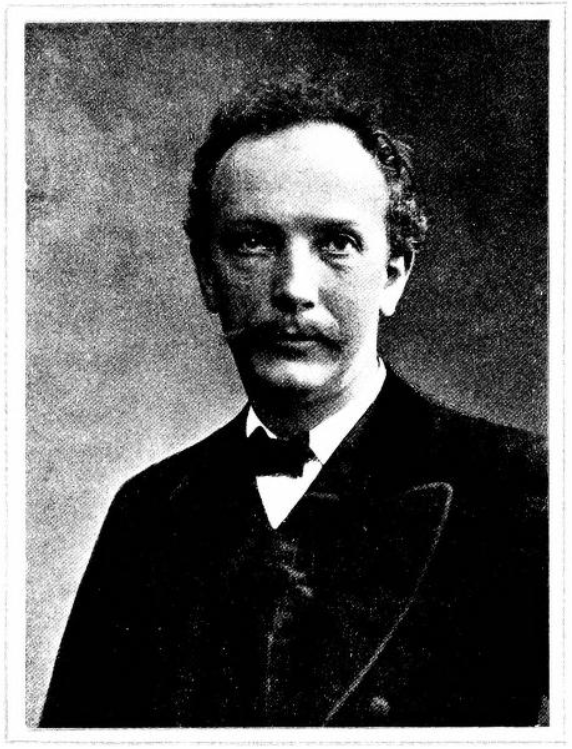
books he published before his death in May 1914.[2]
James Cuthbert Hadden (1859-1914) was a Scottish litterateur and “Master of the Song”[3] who balanced his twin loves of music and literature throughout his life, publishing a myriad of articles, biographies and books while working as an organist in Aberdeen, Crieff, and Edinburgh.[4] Hadden was born in Banchory-Ternan, near Aberdeen, on the 5th September 1859, and by the age of 14 was working with Aberdonian booksellers A. & R. Milne and singing in his local choir. In 1878, at the age of 18, Hadden moved to London to work at the Routledge publishing house, spending his workdays in the literary world and his evenings and weekends practising his skills with the piano and organ. Returning to Scotland due to illness after only three years in London, Hadden “thought no more of bookselling” and “determined to be a musician,” taking up work as an organist first in Aberdeen and then Crieff.[5] He stayed at Mannofield Parish Church for only a few months before moving south to work as organist and choirmaster under the Reverend Dr. Cunningham at St. Michael’s Parish Church, Crieff, where he remained for the next ten years.

While in Crieff, Hadden met and married his future wife, Elizabeth Couper Gordon (1863-1929), and led a busy life both musical and literary. Particularly interesting given my research on the Innerpeffray visitors’ books, Hadden was very concerned about the musical reputation of Crieff to its summer visitors and tourists. In 1890, the last year he spent in Crieff before moving to Edinburgh, he praised the “vigorous and flourishing” Perthshire Choir Union, which had held its annual festival in St. Michael’s.[7] He also wrote a rebuttal to a gentleman who had visited Crieff during the summer and found its music scene wanting:
“Mr. J. Spencer Curwen has thrown a bomb-shell into the Scottish organists’ camp. […] I feel sore, because he has not come to judge our work at the right season. A summer visit creates a false impression, for our choirs are then deprived of many of their best singers, most of our organists have deputies on their stools, and there are of course no rehearsals for the preparation of the Sunday music. The winter is the time to find us at our best.”[8]
Somewhat opposing what he wrote in October 1890, Hadden’s 1910 biography in The Musical Journal suggests that, at least in St. Michael’s, Hadden kept his choir rehearsing throughout the entire year:
“There was an excellent musical service, for the best voices in the town were heard in that choir, and Mr. Hadden had a free hand under the broad-minded minister. Crieff being a resort for holiday makers, special attention was given to the music during the summer, so the weekly choir practice was kept going all the year round. Frequent organ recitals were given, and words of appreciation were often heard from the visitors.”[9]
It is true that the 1910 biography of Hadden is far from objective, written many years after Hadden worked in Crieff, with his full cooperation and by someone who “highly value[d] his friendship” and would not have wanted to risk insulting his subject.[10] Nevertheless, whether Hadden did or did not keep his choir rehearsing all year, it is certainly interesting to think about the musical experience that visitors to Innerpeffray may have had if they stayed in Crieff during their travels.

Crucially, while living and working in Crieff between 1881 and 1891, Hadden visited the Library of Innerpeffray on five occasions! The first record of his signature in the Innerpeffray visitors’ book is from Saturday 24th September 1887, when he visited with his wife, ‘Mrs Hadden’. Two additional visitors are recorded as having been to Innerpeffray that day, ‘R. C. Kay’ and ‘Miss Black’, but due to the lack of information provided (no locations or occupations; only initials and/or title rather than full names) I have not been able to ascertain if they were all part of one visiting party or simply all visiting the library on a Saturday.

Hadden’s second visit to Innerpeffray, the following year, was as part of a larger group of visitors from Crieff, with two additional visitors normally resident in Cambuslang, Lanarkshire but perhaps staying in Crieff for a holiday. As opposed to the example above, it is evident that at least the first six named visitors were all travelling together – the first three names are clearly written in the same hand and the signatures of Annie and Mary McCormick are bracketed by those of Mrs. Hadden, above, and Mr. Hadden, below. What is less clear from this page is whether the two signatures following Hadden were part of the same travelling party. It appears as though the first seven entries on the page were all entered on Saturday 26th May, with the following signature, that of Albert Lister Peace – Glasgow, entered on Thursday 14th June.
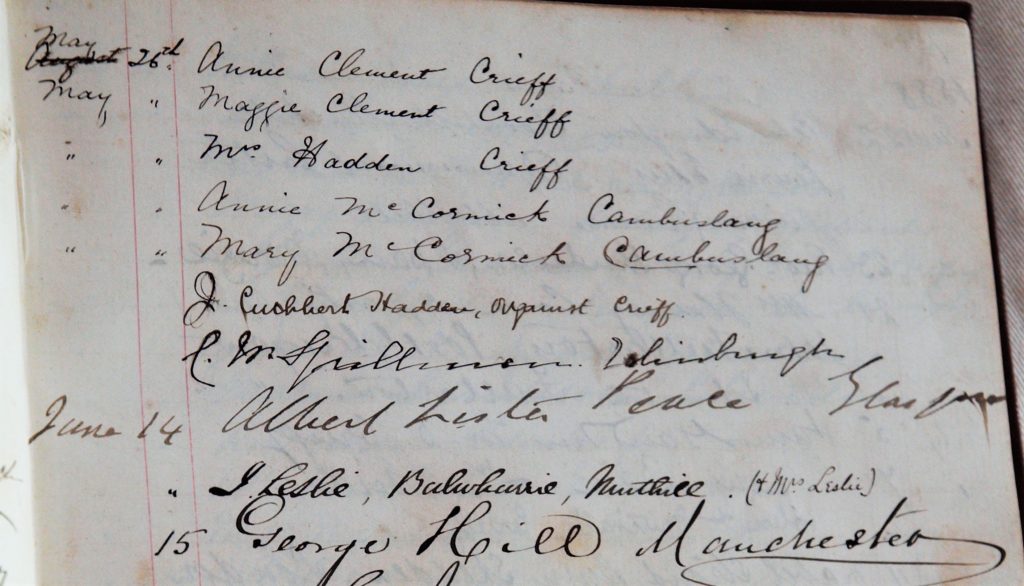
Innerpeffray Visitors’ Book Vol. 1, f.77r
Were this any other signature, I would have accepted this as fact and continued on without making any comment. However, Dr. Albert Lister Peace (1844-1912) was also an organist – and quite a famous one! Peace reportedly started learning how to play the pianoforte at the age of six and only three years later, at nine years old, became the resident organist of his local church in Huddersfield. Between 1865 and 1897, he worked as the organist for the University of Glasgow, Glasgow Cathedral and St. Andrew’s Hall (now the Mitchell Library). Throughout his career, Peace performed at numerous renowned venues around the United Kingdom, including the Crystal Palace in London (1882), Canterbury Cathedral (1886), Liverpool World’s Fair (1886), and Westminster Abbey (1909).[11]
Additionally, there is evidence to suggest that Hadden and Peace knew each other. In the September 1890 edition of his monthly column, ‘Music in the Scottish Churches’, Hadden indicated that he had learned the following news from Peace and that he had seen him perform more than once:
“A new organ, built by Forster & Andrews, to the specification of Dr. Peace, has been opened in Bothwell Parish Church, near Glasgow. Dr. Peace inaugurated the instrument, playing brilliantly as usual.”[13]
Indeed, I think it is fair to say that Hadden held great respect for both his fellow organist and their chosen instrument – in December 1897, he described another performance:
“I have heard Dr. Peace take the great D major fugue of Bach on a large organ with a full and quick-speaking pedal at what could only be called a terrific rate. The effect was positively electrifying.”[14]
With all of this in mind, it seems fairly unlikely, or at least curious, that Peace would have visited Innerpeffray separately from Hadden, and too big of a coincidence to have his signature two entries below Hadden’s, despite the date indicating that it is two weeks later. At the top of the page, it is clear that there had already been some confusion with the date, with ‘August’ crossed out and ‘May’ written above it. Perhaps there was indeed some misunderstanding with what the date was, and Peace did accompany the Haddens. Perhaps it was just happenstance and Peace visited Innerpeffray separately, only to realise that Hadden had visited two weeks ago. It may also be possible that Hadden visited with the initial travelling group on the 26th May, and when he returned to Innerpeffray with Peace two weeks later, on the 14th June, didn’t want to repeat his signature on the same page. There are countless situations which could have led to these entries in the visitors’ book – and I will probably never find out what actually happened. But the story doesn’t end there, because it happened again a month later!

Innerpeffray Visitors’ Book Vol. 1, f.77v
On Wednesday 11th July 1888, Hadden visited the Library of Innerpeffray for a third time, accompanied by his wife, Elizabeth, and his father, James Hadden (1838-1892).[15] And again, another organist signed their name in the visitors’ book – in this instance, apparently a day later. Though John William Davis Pillow (1851-1902), from Landport. Portsmouth, Hants, was not as famous or well-travelled as Albert Lister Peace, it is possible to discover that he was an English organist and conductor who worked primarily in and around the south coast of England. In his youth, Pillow sang in the choir at Chichester Cathedral, where he was taught by resident organist Edward H. Thorne before moving onto his own post at St. Pancras Church, Chichester. In 1889, he served as the director of the Portsmouth Musical Association and in October of that year, he inaugurated the new organ at St. Mary’s Church, Portsea, where he remained as resident organist until 1901.[16] As with the example above, there could be numerous reasons why J. W. D. Pillow visited the Library of Innerpeffray the day after the Hadden family, rather than with them. I could not find any documents suggesting that Pillow and Hadden necessarily knew each other, so perhaps it really is a coincidence. Maybe the ‘12’ next to Pillow’s name was incorrectly placed, meaning to refer to the entry below. In all probability, I will never know the answer – perhaps the contiguous visits were simply serendipitous. But it’s weird that it happened twice.

Later in the summer, on Saturday 4th August 1888, the Haddens again visited the Library of Innerpeffray and brought along additional visitors. Although thus far I have not been able to track down Miss H. N. Bell from Crieff or Mr and Mrs John Garrett from Hamilton, Canada, I cannot rule out the possibility that they, too, were organists!

Finally, on Saturday 20th April 1889, J. Cuthbert Hadden visited the Library of Innerpeffray for the last time, accompanied by two of his fellow gentlemen from Crieff (who do not appear to be organists). In the summer of 1889, the couple moved to 4 Argyle Park Terrace, Edinburgh, where Hadden took up post as organist at St. John’s Parish Church, staying there for twelve years before he is said to have “abandoned music in favour of literature”.[17] In fact, Hadden had been increasingly engaged in “pen work” since 1885, while still in Crieff – he regularly contributed to the Dictionary of National Biography (writing more than 120 entries); wrote a monthly column for The Musical Journal, edited the Scottish Musical Monthly for two years, and published seven books before the turn of the century.[18] By the time Hadden died on the 2nd May 1914, only 54 years old, he had written a further twenty books and was regularly struck by a “great hunger” to perform again.[19]
Although it is not possible for us to hear J. Cuthbert Hadden play the organ, we can read his writing – the Library of Innerpeffray holds a copy of one of Hadden’s books, Thomas Campbell, part of the Famous Scots series and dedicated to his wife.[20]
And in closing, here are two of my favourite anecdotes from his monthly columns. A flying Bible and a sleeping chorister:
“In a Kirriemuir (Forfar) Church the other Sunday a woman is said to have hurled her Bible from the gallery where she was sitting at one of the male members of the choir who had fallen asleep!”[21]
And tales of shock and outrage in Crieff (more research required!):
“One clergyman at Crieff, as he ascended the pulpit-stairs, peremptorily ordered a lady sitting in the choir pew to leave the church. The lady left as requested, and a considerable number of the congregation with her; the precentor sent in his resignation; and now the minister has been sued for £50 damages and a public apology. I trust the law will give the lady both the money and the apology.”[22]
Isla Macfarlane, PhD Student
[1] J. Cuthbert Hadden, ‘R. L. S. and Music’, Glasgow Herald, 21 April 1900, p. 9.
[2] J. Cuthbert Hadden, Modern Musicians: A Book for Players, Singers and Listeners (Edinburgh: T. N. Foulis, 1914).
[3] J. Cuthbert Hadden, ‘Music in the Scottish Churches’, The Non-Conformist Musical Journal, 5.58 (1892), 151–52 (p. 151).
[4] Hadden’s date of birth is much contested and appears incorrectly in a variety of locations and formats, with some websites listing his year of birth as 1816 and (perhaps optimistically?) adding 43 years to his life. Based on his entry in the 1564-1950 Scottish Births and Baptisms register (accessed through Ancestry), James Cuthbert Hadden was born on 5th September 1859. This birthdate is backed up by census entries in the following years, where he was recorded as being one in the April 1861 census and eleven years old in the census of 1871. Additionally, a biography of Hadden which appeared in The Musical Journal in 1910 (plainly written up after an interview and with his full cooperation, given phrases such as “Mr. Hadden tells me” (p.227)) further confirms this birthdate, telling us that “[w]hen he went to London in 1878,” he was “a lad of 18”. Furthermore, several contemporary obituaries published after Hadden’s death in 1914 also note that he died “aged 54”, further confirming his year of birth as 1859.
[5] Broad Nib, ‘Mr. J. Cuthbert Hadden.’, The Musical Journal, 23.274 (1910), 225–27 (p. 226).
[6] Colin Mayall, ‘St Michael’s Church Yard 1972 Survey of Gravestones’, PerthshireCrieffStrathearn Local History, 2015 <https://perthshirecrieffstrathearnlocalhistor.blogspot.com/2015/03/st-michaels-church-yard-1972-survey-of.html> [accessed 15 February 2022].
[7] J. Cuthbert Hadden, ‘Music in the Scottish Churches’, The Non-Conformist Musical Journal, 3.32 (August 1890), 124–25 (p. 125).
[8] J. Cuthbert Hadden, ‘Music in the Scottish Churches’, The Non-Conformist Musical Journal,3.34 (October 1890), 156–57 (p. 156).
[9] Nib, p. 226.
[10] Nib, p. 227.
[11] ‘Peace, Albert Lister, (26 Jan. 1844–14 March 1912), MusDoc Oxon’, in Who’s Who & Who Was Who (Oxford: Oxford University Press, 2007) <https://doi.org/10.1093/ww/9780199540884.013.U189766> [accessed 7 December 2021].
[12] St. Andrew’s Halls (Glasgow: Wilson Advertising Company, 1907), Mitchell Library, Theatre Collection; Glasgow City Council.
[13] J. Cuthbert Hadden, ‘Music in the Scottish Churches’, The Non-Conformist Musical Journal, 3.33 (September 1890), 132–33 (p.133).
[14] J. Cuthbert Hadden, ‘Passing Notes’, The Nonconformist Musical Journal, 10.120 (December 1897), 184–85 (p. 185).
[15] On the 11th July 1888, James Hadden (senior) listed his place of residence as Aberdeen and was clearly in Crieff visiting his son and daughter-in-law, but just twenty days later, on the 31st July 1888, he was admitted to the Dundee Royal Asylum. Over the next four years he moved between the Old Machar Poorhouse and Aberdeen Royal Asylum, where he died of TB on 14th July 1892. ‘General Register of Lunatics in Asylums: Dundee Royal Asylum, Angus’, (Edinburgh: NRS Mental Health Records, 1888), p. 460 <https://www.scottishindexes.com/hentry.aspx?hid=646021> [accessed 16 February 2022]; NRS Reference MC7/6.
[16] W. B. Henshaw, ‘John William Davis Pillow’, Biographical Dictionary of the Organ; ‘History of the Organ’, The Organ Project.
[17] ‘Hadden, J. Cuthbert, Litterateur.’, in Who’s Who & Who Was Who (Oxford: Oxford University Press, 2007).
[18] Nib, p. 227.
[19] Nib, p. 227.
[20] J. Cuthbert Hadden, Thomas Campbell, Famous Scots (London: Oliphant, Anderson and Ferrier, 1899).
[21] J. Cuthbert Hadden, ‘Music in the Scottish Churches’, The Non-Conformist Musical Journal, 4.41 (May 1891), 68–69 (p. 69).
[22] J. Cuthbert Hadden, ‘Music in the Scottish Churches’, The Non-Conformist Musical Journal, 4.37 (January 1891), 4–5 (p. 5).

